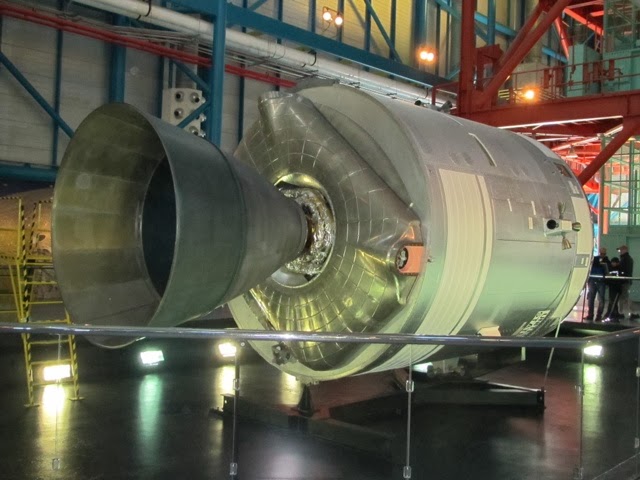Entrance to Kennedy Space Center with the Rocket Garden visible in the background.
Rocket Garden
Historic rockets that tell the story of man's quest for the stars.
Vehicle Assembly Building
To give you an idea of the size of this building; the doors are 456 feet high and take 45 minutes to open. Each star on the US flag is 6 feet across!
Crawler Transporter
This huge crawler transports rockets to the launching pad on its own road designed to hold the great weight. It moves at one mile per hour so it takes anywhere from 3 to 5 hours to get rockets to the launch pad.
Found this internet photo so you could see its immense size!
Launch Pad 39-A
Can you see the water tower? It's used for sound suppression. The 300,000 gallons of water are released just prior to engine ignition. The water floods the launch pad during lift-off and muffles the intense sound waves created by the first stage engines. Due to the heating of the water, a large amount of steam is created during a launch.
Blast heat shield... Can you tell where the heat from a launch melted this heat shield? They will refinish it and use it again on a rocket launch. Next launch is February 20, 2014 where Air Force Delta IV, a GPS satellite, will be blasted into space.
Apollo/Saturn V Center
Mission Control Panels
Actual control panels for the Apollo missions - are you visualizing the Apollo 13 movie?
Saturn V Stage 1
Flag painted on side of Stage 1.
Saturn V Stage 2
Saturn V Stage 3
A peek inside the Service Module.
This is a diagram of the entire Saturn V Rocket and Apollo Spacecraft.
Lunar Lander
Moon Rover
Moon Rock
Scott and I both got to touch a moon rock.
Bleachers for visiting dignitaries to watch rocket launch; this area is 3 miles from launch site.
Launch Pad 39-A
Launch Pad 39-B
Atlantis Exhibit Building
Walking underneath the power behind a groundbreaking space transportation system. The orange external tank and white solid rocket boosters propelled the Space Shuttle into space. Though the SRBs burned just over 2 minutes, they provided most of the thrust needed to launch the Space Shuttle. The ET contained the fuel for launch and emptied completely in 8 1/2 minutes.
Space Shuttle Atlantis
Living quarters and flight deck.
The white heat shield protects the shuttle on re-entry.
Cargo bay
International Space Station docking port.
Remote control arm
Hubble Space Telescope
The Hubble Space Telescope has taken many stunning pictures of our solar system.
Jupiter's moon Ganymede hidden behind the giant planet.
Bald Eagle Nest





























































No comments:
Post a Comment